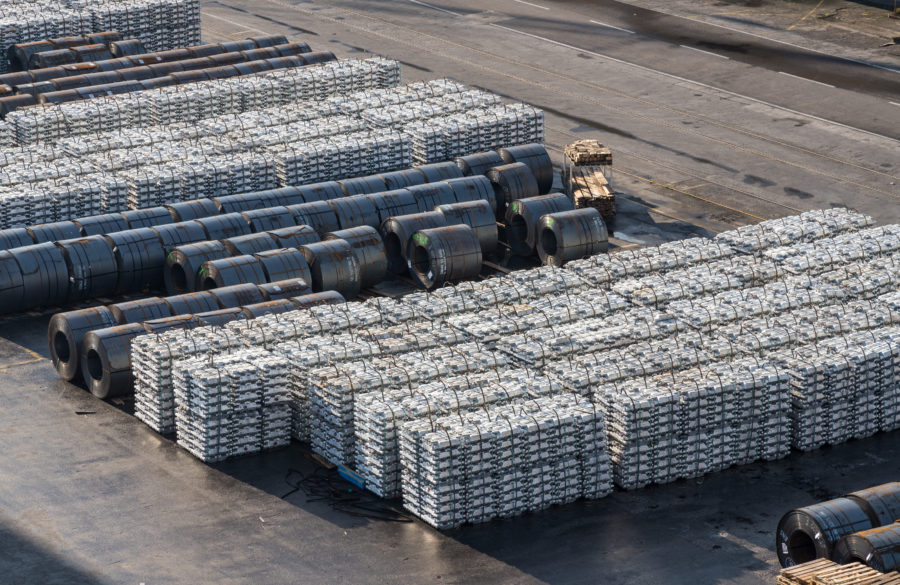Lithium and cobalt – what to look for in 2019

Lithium
Last year saw perhaps less exuberance in the lithium sector. The muted response to the IPOs of industry majors Ganfeng and Livent (ex-FMC) probably best exemplified the lull in excitement. Meanwhile, stocks of already traded lithium companies also had a painful time of it in 2018.
For lithium spot prices in the Chinese domestic market, 2018 saw only one direction – down. Rising domestic supply, EV subsidy changes, and destocking all combined to send prices for 99.5% lithium carbonate from RMB160,000/t at the start of 2018 to RMB77,500/t by the end of the year. Yet conversely, average prices for seaborne material – largely sold on contract basis – seemingly bucked the trend, with realised prices for SQM and Albermarle increasing up to Q3 2018.
Poor performances on the supply side helped strengthen contact prices . While the year saw three new Australian spodumene mines – Altura, Pilbara, Alliance Minerals – commence commercial output, conversion capacity within China remains a bottleneck. Meanwhile, the big brine producers in Chile both had ramp-up issues: Albermarle with the still slow-moving La Negra II, and SQM with the delay of its carbonate expansion to 70 ktpa.
Last year, we also witnessed increased industry consolidation across the board. Traditional brine producers increased their exposure to hard rock spodumene operations, and vice versa. Chief among these were Tianqi Lithium buying a 23.77% stake in SQM for $4.07 billion, and Albermarle agreeing to take a 50% stake in Mineral Resources’ Wodgina operation for $1.15 billion. Additionally, we saw Ganfeng acquire a 37.5% stake in the Cauchari-Olaroz project being developed by Minera Exar. Despite the sheer number of lithium projects at various stages of development, the future looks increasingly to remain the domain of the incumbent producers.
Key points to watch for lithium this year:
Hard rock ramp-up
Key sources of new supply for the year will largely emanate from Australia once more. And why wouldn’t they? The ‘lucky country’ has displayed its ability to fast-track spodumene operations in recent years through a combination of a benign investment environment, technical expertise and existing infrastructure. The biggest splash is likely to come from Mineral Resources commencing the transition from exporting the relatively hard-to-process direct shipping ore (DSO) feed to spodumene concentrate. Indeed, with exports expected to total around 33 kt LCE for the year, Wodgina is set to become one of the largest lithium operations globally in LCE terms. We will also see the three new hard rock mines that started up last year ramp up towards full capacity. All in, we forecast an additional 60 kt of LCE output from Australia’s mines. Additional tonnages are also due from Brazil with the ramp-up of AMG’s and Signum Lithium’s projects .
Chemicals capacity is coming
The bottleneck in ‘effective’ spodumene capacity, and delays in achieving product certification for battery-grade lithium carbonate or hydroxide products, have been key supports for prices since the lithium boom emerged. We do not see this tightness continuing, and expect conversion capacity and required feedstock supply to be more appropriately balanced through downwards vertical integration of mines in Australia, and upwards integration of Chinese converters. 2019 will be a key year in this rebalancing. Both with the ramp-up of mine supply outlined above, and with the addition of significant new conversion facilities, primarily in China. The largest of these will be the start-up of Albermarle’s Xinyu II unit in Jiangxi province, which will have capacity of 20 ktpa of lithium hydroxide. However, a number of other plants – many attached to the growing Qinghai ‘brine scene’ – are set to go into commercial production this year, including Zangge Lithium (10 ktpa carbonate), Qinghai Lithium (5 ktpa carbonate) and Qinghai Hengxingrong (4.5 ktpa carbonate). Other conversion plants processing hard rock concentrates are expected from Sichuan Energy Investment (10 ktpa carbonate) and Hefei Tiansheng Lithium (5 ktpa). Meanwhile, 2019 will also be the year when Australia moves from producing lithium raw materials to chemicals with the start-up of Tianqi’s huge 48-ktpa hydroxide plant at Kwinana.
Seaborne prices to soften
For 2019, we expect a challenging year in terms of pricing as new supply ramps up. Put simply, we have supply growth of 110 kt of LCE versus demand growth of 33 kt. Cracks have already started to appear in contract pricing, with Orocobre reporting Q4 2018 sales prices down 26% from the previous quarter. Realised prices for SQM and Albermarle remain high, but we do expect some convergence given the 2018 rout in Chinese spot prices. Likewise, the high prices for spodumene concentrate that have prevailed over the past year or so are expected to come under pressure as Chinese buyers look to renegotiate. Mineral Resources recently announced prices from Mt Marion would be 13% lower in Q4 2018, and recent indications show the limited spot material is trending lower.
Cobalt
While lithium spot prices moved only one way in 2018, cobalt experienced more of a rollercoaster ride. Indeed, prices started gathering momentum in late 2017, and surged into the year to peak at $95,000/t in March. Many were convinced the EV revolution had arrived, and strategies to thrift cobalt were quickly accelerated through the battery supply chain. Yet tightness in the cobalt metal market was ultimately at the crux of the rally. A combination of tighter credit in China, destocking, and rising supply of intermediates from the Democratic Republic of Congo (DRC) subsequently sent prices southwards again. By the end of the year, LME cobalt prices, buffeted by lack of buying interest and concerns over the artisanal provenance of some brands, had fallen to just $55,500/t.
With Kabila expected to keep pulling the strings, we do not see any major changes in the mining code or investment climate for now.
One of 2018’s key events was the introduction of the new mining code in the DRC. The new code, signed off by President Kabila in March, imposed wide- ranging changes. These included a special 50% tax on ‘excess profits’, an increase in royalties from 2% to 3.5% and the creation of a special 10% royalty on minerals deemed by the state to be ‘strategic substances’. Western mining companies were outraged, particularly by the removal of the previous 10-year stability clause. The miners threatened international arbitration and suspension of operations, but protestations were ignored and the new code was signed into law on 8 June. Sure enough, the designation was made in December and royalties for cobalt further increased to 10%.
Of all the cobalt miners, perhaps the biggest – Glencore – had the most eventful year. The company became embroiled in a number of legal disputes, both with past partners and with the DRC government. Ultimately, the company agreed in June to write off $5.6 billion in debt to save its Katanga Mining-Gécamines 75:25 joint venture, Kamoto Copper Company. Meanwhile, near the end of the year, the company announced that exports from Katanga – the world’s largest cobalt operation – were suspended due to high uranium levels in the cobalt hydroxide.
Plenty of excitement last year, but what does 2019 hold for the cobalt market?
DRC elections – who won?
As 2019 has got under way , all eyes have been on the delayed DRC election results. Most were stunned when the electoral commission declared outsider Felix Tshisekedi the winner, and suspicions of a back-room deal between him and the incumbent Kabila quickly grew. The subsequent release of raw voting data to journalists indicated Martin Fayulu as the winner, a claim backed up by the Catholic church’s own election observers. Fayulu attempted to challenge the results, yet the constitutional court confirmed the preliminary results and Tshisekedi was due to be sworn-in on 24 January. Not a lot is known about Tshisekedi and what his potential impact might be on the resources sector. However, with Kabila expected to keep pulling the strings, we do not see any major changes in the mining code or investment climate for now.
Heaps of hydroxide!
With the installation of an ion-exchange system, Glencore expects to resume exports from Katanga by the end of Q2. While guidance has been revised down from 34 kt to 26 kt in light of the suspension, output still looks large when we consider demand growth of around 11 kt for the year. Yet the Katanga restart is only the beginning. ERG has commenced cobalt hydroxide shipments from its Metalkol RTR project in January, while we will also see the ramp-up of new supply from Pengxin (Shituru), Zhejiang Huayou (Mikas), Chengtun and Tengyuan Cobalt’s project among others. Towards the end of the year, Shalina Resources plans to bring online its new 16-ktpa Mutoshi project. All in, our base case forecast is for an additional 36 kt of, primarily, cobalt in hydroxide. How can prices cope in the face of this tsunami of new supply?
Price decline to continue
Of course, the cobalt industry references the cobalt metals price. It is feasible that oversupply in the intermediates market could be obscured by tightness in the refined metal market, as occurred in the early part of 2018. Yet our analysis reveals adequate latent capacity of metals going into 2019. And with a soft hydroxide market forecast expected, we do not foresee any prolonged periods of market tightness for cobalt this year. Indeed, cobalt prices started to slide as soon as 2019 began. Since the beginning of January, the LME cash price has declined from $41,500/t to $36,000/t. We currently forecast an average of $63,934 ($29/lb) for 2019, but would assign downside risk to this given the flood of new supply under way.
More News
China’s mining investment under Belt and Road Initiative sets new record – report
China's overseas mining investment under its Belt and Road Initiative hit another peak last year at $21.4 billion.
March 29, 2025 | 10:26 pm
Column: Europe’s future metals strategy hindered by current crisis
Chinese over-capacity and high energy prices have accelerated the long-term decline of European steel and aluminum production.
March 29, 2025 | 02:25 pm
{{ commodity.name }}
{{ post.title }}
{{ post.excerpt }}
{{ post.date }}



Comments